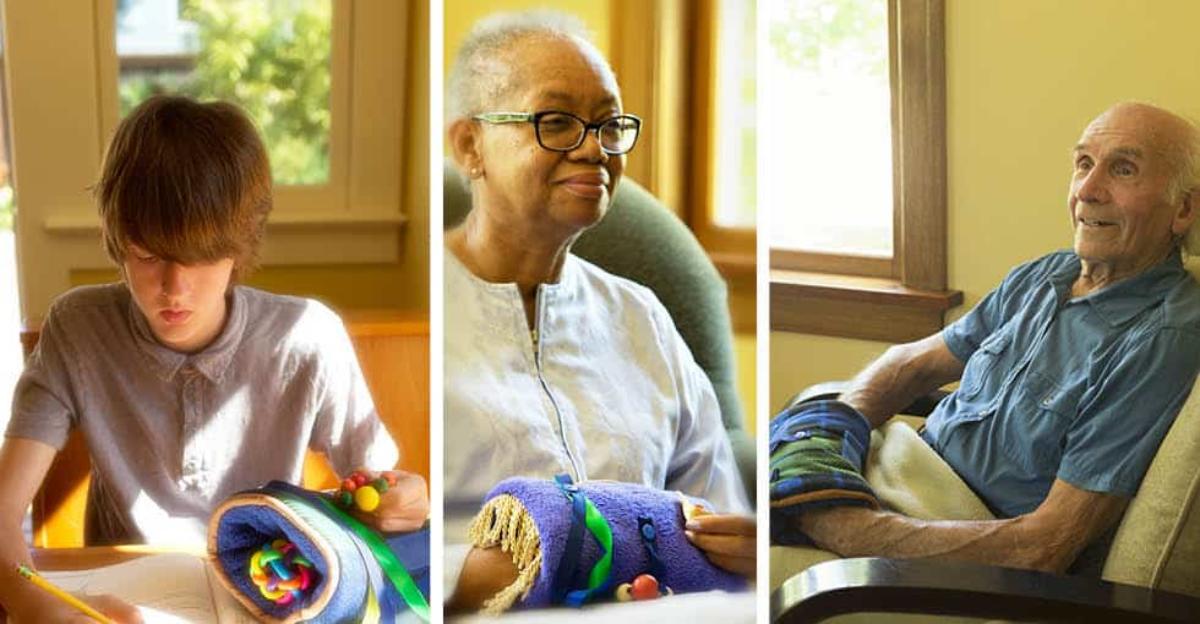In this post, we recap blogger Cecilia Cruse, MS, OTR/L on her personal journey from a few years ago regarding the importance of sensory tools. She writes:
“This week I have a little more personal note to share. My 88-year–old mom (and my BFF) is now entering her 2nd month of hospice care in her home. Just a few months ago she was still active…playing golf, driving and living independently so it is has been a bittersweet change for her and my siblings as we watch her life now start winding down. As I spend this precious time with her, I realize how simple sensory tools and preferences that we use with our kids with SPD issues (….and all children really!) can be comforting and organizing for her as well. She now prefers dry wick seamless socks, soft cotton sweats, a heavy pillow on top of her covers at night, a calendar by her lounging chair which we update often and remind her to check, a clock to help keep track of time and transitions. Her days are measured by small successes (putting a pullover top on by herself, a clean plate, short steps without the walker, more than 5 hours of sleep at a stretch!) and delightful gifts to savor (a favorite book, a cardinal at the birdfeeder outside her window, that first sip of hot coffee in the morning, her long time hairdresser making a home visit to do her hair). Tiny sensory steps and rewards that we take for granted in our busy world until you pause long enough to take notice. I think that as pediatric OT’s we have probably brought calm, solace and even beauty to many of the children and their families that we serve. Applying some of these principles to my mother’s life has brought new meaning to my definition of sensory integration and sensory tools. Take a look around you this week and marvel at our sensory world and your training as a pediatric therapist to provide and share these tools with others. You DO make a difference! “
This post is a lovely reminder on recognizing the importance of sensory processing and tools for success and transitions (big or small) no matter what age! One of our newest and most popular solutions, the Twiddles Series are beautiful fidget options for children and adults. The muff design encourages hands- to- midline and neutral warmth techniques for calming while the various fidgets (beads, ribbons, an orbit/stress ball, ) become a more appropriate means for some with Alzheimer’s or on those on the Autism Spectrum to effectively deal with SIBs of skin picking or hand flapping. The side pocket is perfect for additional sensory cues to personalize the Twiddle with a small photo, an aroma sachet or a scented handkerchief. We have also expanded our weighted/deep touch pressure options to include the Kordy Weighted Animal Series and the Senseez Series of Vibrating Pillows . Together these make a stockpile of tools for calming, organizing and providing relevant sensory input.
We hope your journey across the lifespan is a sense-ational one! And if you have quick tips to help our kids with special needs, (the Young and Young at heart) please share them with us in the comments below.
Cecilia Cruse
Cecilia Cruse, MS, OTR/L has a BS degree in Occupational Therapy from the University of Florida, and her Master’s degree in Education from Georgia State University. She is SIPT certified and has over 25 years’ experience in pediatrics with school-based services, acute care, and outpatient pediatric settings.







Leave a Reply